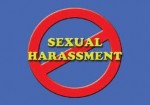In April 2014, I created an on-line survey using Survey Monkey that asked the question entitled, Sexual Assault and  Rape Against Women in the Fire Service, which I widely disseminated across social media using LinkedIn, Facebook, and Twitter. The following information was included at the beginning of the survey to help participants to more accurately respond to the survey questions.
Rape Against Women in the Fire Service, which I widely disseminated across social media using LinkedIn, Facebook, and Twitter. The following information was included at the beginning of the survey to help participants to more accurately respond to the survey questions.
Scope of this Survey
My purpose for this survey is to “hear” from women firefighters who HAVE suffered sexual assault or rape by a fellow member of the fire service. Specifically I hope to gather data related to:
- What was the relationship of the perpetrator to the victim?
- Did the incident get reported?
- To whom was it reported?
- If it was reported, what was the outcome?
Thank you for your participation in making the fire service a safer place for women.
Definitions of Sexual Assault and Rape
SEXUAL ASSAULT
The exact definition of “rape,” “sexual assault,” “sexual abuse” and similar terms differs by state. The wording can get confusing, since states often use different words to mean the same thing or use the same words to describe different things.
So, for a precise legal definition, you need to check the law in your state. But here are some general guidelines based on the definitions used by the U.S. Justice Department. Please note that this definition is a bit graphic, which is inevitable when describing crimes this violent.
Sexual assault: unwanted sexual contact that stops short of rape or attempted rape. This includes sexual touching and fondling. (But, be aware: Some states use this term interchangeably with rape.)
 RAPE
RAPE
Rape is forced sexual intercourse, including vaginal, anal, or oral penetration. Penetration may be by a body part or foreign object.
Rape victims may be forced through threats or physical means. In about 8 out of 10 rapes, no weapon is used other than physical force. Anyone may be a victim of rape: women, men or children, straight or gay.
 Fire & EMS Leader Pro The job of old firefighters is to teach young firefighters how to become old firefighters!
Fire & EMS Leader Pro The job of old firefighters is to teach young firefighters how to become old firefighters!